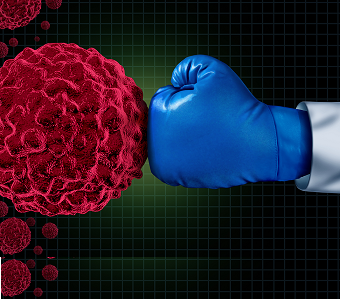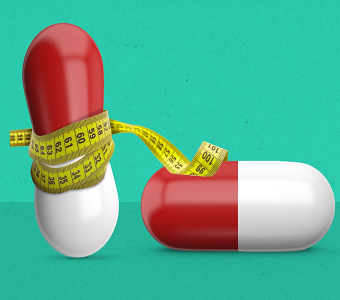We have long covered Alexion Pharmaceuticals (ALXN), arguing that the company’s continued growth potential and pipeline expansion opportunities have left shares undervalued. Since our buy recommendation in July of 2013, ALXN has rallied over 54% (versus a gain of 30.63% for the benchmark NASDAQ Biotechnology Index) driven by solid performance in the core business, as well as above-consensus Q4 results and 2014 guidance.
Although ALXN commands a premium valuation, there’s ample evidence to suggest that the premium is warranted: Alexion is positioned for significant pipeline advancements during the course of 2014, with perhaps the most important development being the looming reveal of the target indications and mechanism of action of ALXN1007, which to date has been shrouded in secrecy. All this comes as Alexion is continuing to expand the market for Soliris, both domestically and internationally. On Monday, Alexion guided higher on 2014 revenues after finalizing reimbursement discussions with French regulators. The company will be reimbursed on Soliris sales moving forward, in addition payment for shipments of Soliris made prior to January 1, 2014. It’s a win for the company and one that should increase 2014 net product revenue guidance from a prior range of $2 – $2.02 billion to the higher range of $2.15 – $2.17 billion. Non-GAAP EPS guidance was increased from $3.70 – $3.80 to $4.37 – $4.47.
Q4 2013 Results: Growing Revenues, Cutting Taxes
Alexion reported its Q4 and full-year 2013 results on January 30, 2014, with both sales and EPS coming in ahead of estimates. Below, we present a consolidated overview of Alexion’s results.
Alexion Q4 2013 & 2013 Results
| Q4 2013 | Q3 2013 | Q4 2012 | Sequential Change | Y/Y Change | 2013 | 2012 | Y/Y Change | ||
| Revenue | $441,909,000 | $400,405,000 | $320,526,000 | 10.37% | 37.87% | $1,551,346,000 | $1,134,114,000 | 36.79% | |
| Cost of Sales | ($50,687,000) | ($41,420,000) | ($32,271,000) | 22.37% | 57.07% | ($165,161,000) | ($123,399,000) | 33.84% | |
| Gross Profit | $391,222,000 | $358,985,000 | $288,255,000 | 8.98% | 35.72% | $1,386,185,000 | $1,010,715,000 | 37.15% | |
| Gross Margin | 88.53% | 89.66% | 89.93% | 89.35% | 89.12% | ||||
| R&D Expenses | $79,841,000 | $68,906,000 | $59,943,000 | 15.87% | 33.19% | $278,688,000 | $208,893,000 | 33.41% | |
| R&D Expenses as a % of Revenue | 18.07% | 17.21% | 18.70% | 17.96% | 18.42% | ||||
| SG&A Expenses | $121,834,000 | $109,849,000 | $103,275,000 | 10.91% | 17.97% | $440,636,000 | $347,319,000 | 26.87% | |
| SG&A Expenses as a % of Revenue | 27.57% | 27.43% | 32.22% | 28.40% | 30.62% | ||||
| Total Operating Expenses | $201,675,000 | $178,755,000 | $163,218,000 | 12.82% | 23.56% | $719,324,000 | $556,212,000 | 29.33% | |
| Operating Expenses as a % of Revenue | 45.64% | 44.64% | 50.92% | 46.37% | 49.04% | ||||
| #DIV/0! | |||||||||
| Operating Income | $189,547,000 | $180,230,000 | $125,037,000 | 5.17% | 51.59% | $666,861,000 | $454,503,000 | 46.72% | |
| Operating Margin | 42.89% | 45.01% | 39.01% | 42.99% | 40.08% | ||||
| EPS | $0.87 | $0.83 | $0.60 | 4.82% | 45.00% | $3.08 | $2.13 | 44.60% |
On all relevant period comparisons, Alexion posted solid results. Sequential sales grew by over 10% in Q4 2013, with year-over-year sales growing by almost 38%. For 2013 as a whole, sales of Soliris grew by almost 37%. For the year as a whole, Alexion’s sales growth was broad-based; domestic sales grew by 40%, European sales increased by 23%, Asia-Pacific sales grew by 26%, and sales in other markets grew by 76%. While gross margins dipped slightly to 88.53% in the fourth quarter, they rose on a full-year basis (we remind investors that Alexion’s gross margins tend to fluctuate from quarter to quarter). More importantly, Alexion expanded operating margins on a year-over-year basis to almost 43% in both Q4 and 2013 as a whole due to tight SG&A cost controls, which allowed for over 33% growth in R&D expenditures as Alexion ramps up its pipeline investments.
Pro forma EPS of $3.08 (ahead of estimates) represents growth of almost 45% relative to 2012.
As Alexion stressed on its Q4 earnings call, growth in sales of Soliris is being driven by both PNH and aHUS. The company has continued to identify new PNH patients, with the belief that PNH is under-diagnosed in many markets likely to play out through 2014. The company noted steady growth in all key markets, including the Untied States, Europe, Turkey, and Japan, and COO David Halal has hinted at new markets that will launch in Latin America, Europe, and Asia; we expect more color on this as 2014 progresses.
In the aHUS franchise, Alexion is continuing to launch commercial sales, most notably in Europe, where reimbursement discussions are ongoing in various countries. In the United Kingdom (a market we have discussed at length in previous coverage of Alexion), discussions with the NICE are ongoing regarding a permanent reimbursement system, and management has said that a decision will be reached by the end of the year. Province-level reimbursement negotiations are ongoing in Spain, building upon a federal reimbursement at the end of Q3 2013. Discussions are also ongoing in France and Italy, with negotiations set to conclude in “mid-2014.” Furthermore, Alexion’s management team laid out their view that the global aHUS market is likely larger than that of PNH based on incidence data available to the company.
Continued growth in Soliris aHUS sales is driving robust guidance from Alexion for 2014 as a whole. For the year, the company is now forecasting sales of $2.15 – $2.17 billion, which represents year-over-year growth of 30%; we note that on the company’s earnings call, CFO Vikas Sinha used the word “organic” to describe the company’s 2014 forecast and growth, and it remains to be seen if any asfotase alfa sales will be recorded during the year (more on this below). While revenue guidance comes above a consensus forecast of $1.96 billion, the real story is Alexion’s EPS guidance. For 2014, the company is now forecasting EPS of $4.43 at the midpoint (a range of $4.37-$4.47). Coming into year-end, estimates called for full-year EPS of $3.46. The differential is due largely to a significant tax reorganization and now, French reimbursement.
Like many pharmaceutical companies, Alexion is taking advantage of favorable Irish corporate tax rates to structurally boost profits. The company has maintained a presence in Ireland to serve its European markets, it has now centralized its global supply chain and “business operations” in Ireland. And, key Soliris patents have been transferred to Alexion’s Irish unit. The practice is rapidly becoming commonplace in pharma; deals between Actavis (ACT) and Warner-Chilcott, Perrigo (PRGO) and Elan, and Jazz (JAZZ) and Azur have all been based in large-part on the tax savings that the target’s Irish tax domicile would create for the combined company. Alexion’s reorganization will cut its 2014 tax rate to just 10-11%, far below the >23% tax rate Alexion paid in 2013 (based on GAAP tax provisions relative to non-GAAP operating income; Alexion’s cash tax payments continue to be minimal due to the use of operating loss carryforwards).
The company forecasts a long-term tax rate of 16-18%. Alexion’s Q4 results and guidance show that the company’s core business is performing well ahead of the likely launch of its second approved drug, asfotase alfa, which is set up to become Alexion’s 2nd blockbuster franchise.
HPP & Asfotase Alfa: Preparing for Launch
Alexion now anticipates asfotase alfa to launch in “late 2014,” and preparations are underway in several markets to begin serving pediatric-onset HPP patients (as a reminder, asfotase alfa holds Breakthrough Therapy designation from the FDA). Field-based medical teams are in place both in the United States and in key western European countries ahead of the drug’s launch, and Alexion is beginning to ramp up physician marketing and education, which is an integral part of the company’s strategy. When dealing with ultra-rare diseases such as PNH, aHUS, and HPP, it is essential to improve the diagnostic capabilities of physicians and their awareness of the disease. HPP is no exception. Low levels of alkaline phosphatase are the underlying cause of HPP, regardless of the age of onset. And yet, many physicians are simply unaware that they should be looking for low alkaline phosphatase levels, even though they can be measured via routine blood tests. As CEO Leonard Bell noted on Alexion’s Q4 call, many physicians that see patients with early onset tooth loss and frequent bone fractures (both symptoms of HPP) do not think of testing their patients for low levels of alkaline phosphatase, or they instead test for elevated levels.
It’s these physician education and outreach efforts that may create room for upside on peak anticipated asfotase alfa sales. In our prior coverage of Alexion, we noted that peak sales estimates for asfotase alfa stand at around $1.1 billion. However, new checks conducted by Deutsche Bank suggest that the market may be as large as $1.6 billion due to higher incidence rates than published literature suggests. Part of the problem in determining a true market size for HPP is the relative scarcity of data. A Canadian study published in the American Journal of Medicine suggested an incidence rate of 1 in 100,000 for HPP. However, that study, published by Donald Fraser, was conducted in 1957. Furthermore, as Deutsche notes, the study did not account for infants that died before being diagnosed with HPP (infant mortality rates for HPP are around 50% in the first year of life) nor did it account for infants that went undiagnosed. The study was conducted among the Mennonite population of Manitoba, which has a far higher carrier rate (1 in 25) of the HPP mutation that the standard population, leading to an incidence rate of 1 in 2,500. Given that the study was published in 1957, it is highly likely that the requisite diagnostic techniques were unavailable for a more accurate incidence rate.
A second HPP study (published in the Annals of Human Genetics in 2011) in France calculated a much lower HPP incidence rate of 1 in 300,000. But as was the case with the Fraser study, the French study also failed to account for infants that died before diagnosis, and it assumed that all cases of HPP were diagnosed. The real incidence rate likely lies somewhere in between these two data points; Deutsche Bank is forecasting an incidence rate of 1 in 25,000 for the United States, and one in 50,000 in Europe. The firm models 5,000 total patients by 2020 (up from 3,000 in 2014). Assuming that 5,000 patients represents a ceiling for the global HPP population (which it may not), the firm’s maximum peak sales forecast implies an annual price tag of $320,000 for asfotase alfa. While that price tag would fail to break Soliris’ world record, it would give asfotase alfa fifth in the ranking of the world’s most expensive drugs, a slot currently occupied by Sanofi’s Myozyme. As 2014 progresses, we expect further clarity from management regarding asfotase alfa pricing, and specifics regarding both the drug’s launch timetable and the global market opportunity.
Other Assets: Moving Towards Diversification
With research & development spend up over 33% in Q4 2013, Alexion is not standing still when it comes to moving its pipeline through the development process. One of the most notable developments in recent months regarding the company’s pipeline relates not to any actual drugs, but to a potential change in management’s approach.
On January 16, Alexion announced that it has struck an exclusive agreement with Moderna Therapeutics (privately held) to develop mRNA therapeutics (messenger RNA) for certain rare disease. Alexion is paying $100 million upfront for 10 product options that utilize Moderna’s mRNA platform (Alexion has also invested $25 million into Moderna via newly issued shares of preferred stock). Under the terms of the agreement, Alexion will be responsible for development of the treatments produced via the collaboration, while Moderna will be responsible for developing the relevant messenger RNA against the targets in question, with the company eligible for further milestone payments. While the entirety of Moderna’s pipeline remains in the pre-clinic, the company is already developing nine different compounds. Furthermore, Alexion is not the only partner Moderna has. In March 2013, Astra Zeneca (AZN) provided its own seal of approval to Moderna, paying $240 million upfront for up to 40 product options, with the same terms as the Moderna-Alexion deal.
Historically, Alexion has eschewed partnerships and collaborations. The company has either bought its pipeline (Enobia & Taligen) or developed it in-house, avoiding sharing profits with outside firms. The Moderna deal represents a departure from the norm, and with over $1.4 billion in net cash at the end of Q4 2013, and over $468 million in free cash flow in 2013, Alexion has ample capital to continue filling the pipeline. Management noted on the conference call that it continues to examine new opportunities, both in early stage and late assets, and with a clean balance sheet, the company will likely be able to move quickly should new opportunities arise. As investors await the possibility of further business development news, there’s plenty to see in Alexion’s internal pipeline (which we have covered in detail in previous reports).
Enrollment in the Soliris antibody-mediated rejection living donor study is set to be complete by the end of the first quarter, with enrollment in the deceased-donor study to be complete in the summer of 2014. For delayed graft function, the FDA has now granted orphan drug status to Soliris, and Alexion has announced that its registration trials will commence in mid-2014 following positive negotiations with the FDA and EMA. Registration trials of Soliris in refractory myasthenia gravis are also set to begin in Q1 2014. A new cPMP study in MoCD Type A is also set to begin in the current quarter, with enrollment in the natural history study to be complete this year as well.
In addition, the company is moving forward with ALXN1007, with Phase II trials set to begin in Q1 and data available for one indication by the end of 2014. Alexion has, to date, refused to divulge the indications that it plans to pursue with ALXN1007, and clarity should create a better picture of the company’s long-term value. R&D head Martin McKay stated on Alexion’s Q4 earnings call that more information regarding both the mechanism of action and the underlying indications for ALXN1007 will be disclosed by the end of Q1 2014, and that disclosure should help lift sentiment surrounding Alexion. Alexion also provided a brief update on its Soliris successor development, introducing a third possible successor molecule. Management affirmed that clinical studies with two next-generation Soliris molecules would begin this year, with a third molecule now in the pre-clinical stage. While there is little to suggest that there is any meaningful competition to Soliris on the horizon (beyond ViroPharma’s efforts to develop Cinryze in refractory PNH, on which the company has provided scant data to date), Alexion is being proactive in its approach to Soliris, which continues to form the bedrock of the company.
Alexion Pharmaceuticals continues to post solid results form its core Soliris business as it prepares to launch asfotase alfa, the market for which may be materially larger than many investors expect. With a clean balance sheet, the company has ample room to add new assets to the pipeline even as it moves forward with in-house programs. With continued expansion in the market for Soliris, the pending launch of asfotase alfa, and continued pipeline progress, we expect 2014 to be another year of growth for Alexion, and investors’ appetite for risk has not yet abated. Despite a soaring valuation, there’s much in-store in 2014 for Alexion investors.
In connection with ALXN, PropThink has taken a long position.




